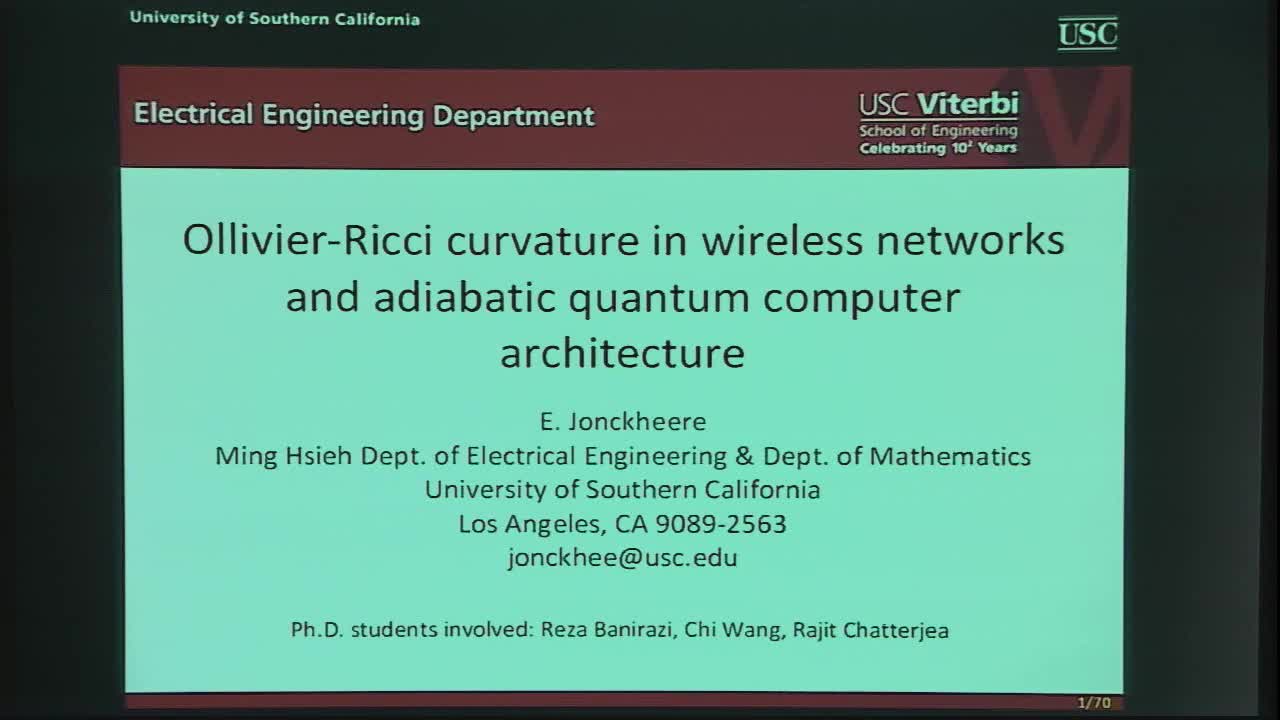Ollivier-Ricci Curvature in Wireless Networks and Adiabatic Quantum Computer Architecture
Presenter
April 30, 2014
Keywords:
- Computer Architecture
MSC:
- 68M07
Abstract
Ollivier-Ricci curvature appeared in the context of Riemannian geometry as a coarse notion of the ordinary Ricci curvature. It then migrated to graphs, where its interpretation as a transportation cost (formalized under the first Wasserstein distance) clearly makes it relevant to networking problems. The first occurrence of the Ollivier-Ricci curvature is in the context of wireless networking under a protocol inspired, but different in many respects, from the Back-Pressure and referred to as Heat-Diffusion. Equipped with a concept of heat diffusion on a directed, interference network, it will be shown that the Heat-Diffusion protocol has the unique property of throughput optimality in addition to Pareto optimality relative to average queue length and routing cost. As major result, it will be shown that average queue length and routing cost both increase as the Ollivier-Ricci curvature decreases (becomes more negative). In addition, as the Ollivier-Ricci curvature decreases (becomes more negative), the capacity region shrinks. In a sense, the Ollivier-Ricci curvature plays the same role as the Gromov curvature of wireline networks. It should be noted, however, that the protocol for wireless and wireline networks are different and hence call for different curvature concept to deal with the "congestion" problem. This already gives the hint that the two curvatures cannot be related to each other. This fact is best confirmed by the tree-width problem, instrumental in mapping--and solving--a QUBO problem on a quantum adiabatic architecture. Simulation results on a variety of graphs show a simple linear interpolation relation between tree-width and Ollivier-Ricci curvature, while Gromov curvature, related to tree-length, can be demonstrated to be incomparable with tree-width.
